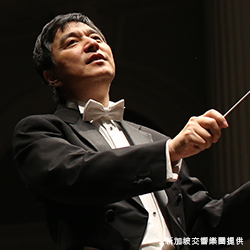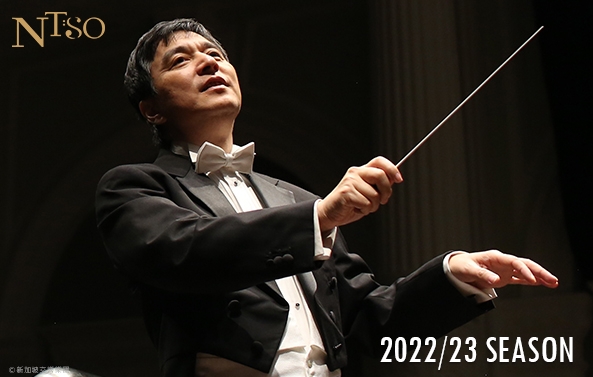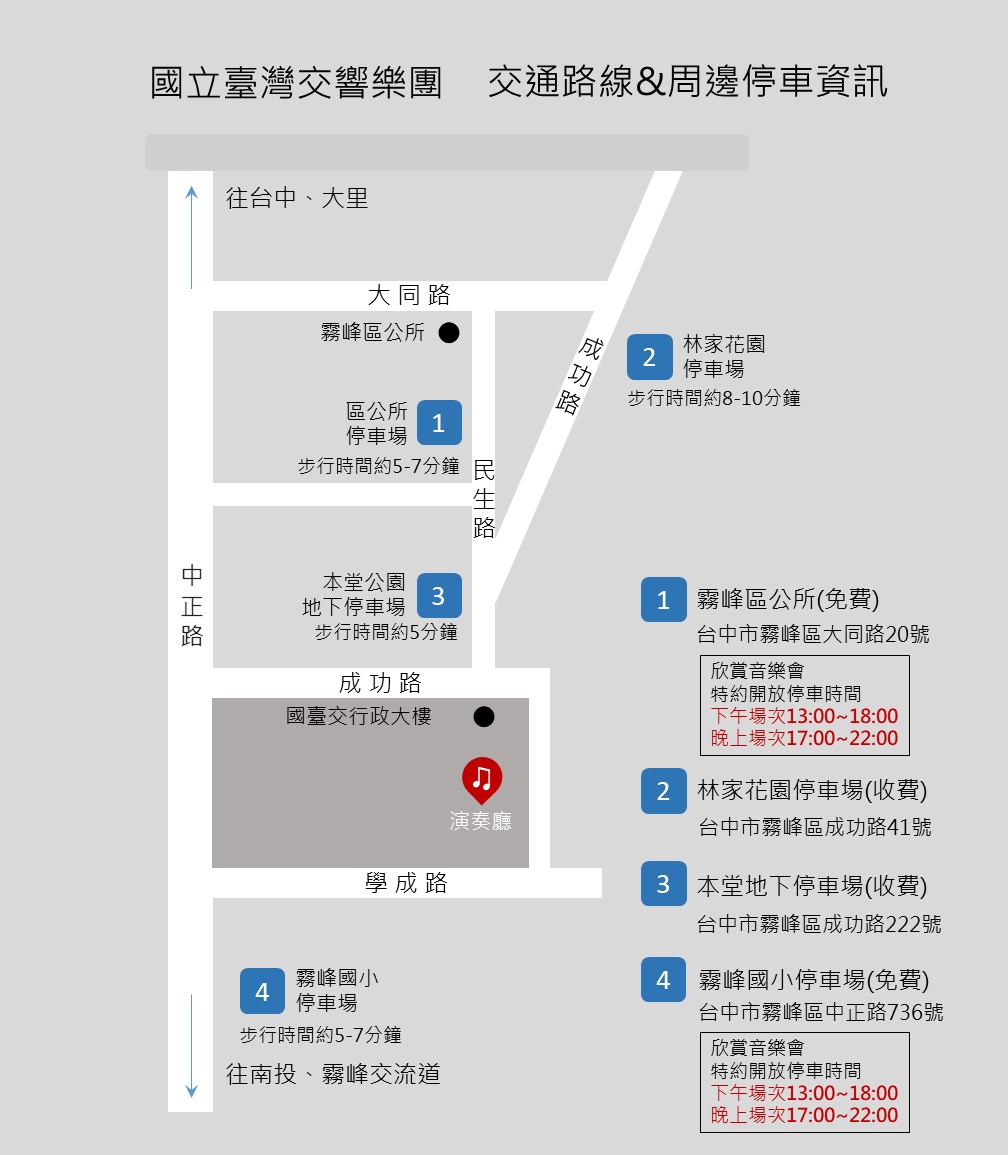| 場次 | 場地 | 音樂家 |
|---|---|---|
| 2023/06/17(六)19:30國立臺灣交響樂團演奏廳 |
|
水藍 Lan Shui
|
| 2023/06/18(日)14:30國家音樂廳 |
|
水藍 Lan Shui
|
| 2023/06/21(三)19:30衛武營國家藝術文化中心音樂廳 |
|
水藍 Lan Shui
|
※成年禮金(文化幣):自2023/6/6中午12:00起歡迎使用文化幣點數購票,另享以下特有優惠(需全額以文化幣點數支付,相關成年禮金使用指南請點擊了解):
1. 最高票價區(6/17臺中場1000元區、6/18臺北場及6/21高雄場1500元區)享「青年席位300元」優惠(可於最高票價區自行選位,售完為止)。
2. 不限票價6折優惠(100元票區除外)。
2023/02/17啟售,首5日(02/17-02/21)NTSO 2022/23 VIP限定,02/22全面啟售。*成為NTSO VIP請點擊了解詳情
2023/03/08前「15選6限時6折套票」、「衛武營6折套票」優惠請點擊詳閱說明*100元票價不再折扣
★「成雙」套票:同場次一次訂購2張,第2張半價(須同票價)
★NTSO逢9限定:每月9日、19日、29日購票享79折。
★NTSO 2022/23 VIP:鑽石卡享7折,金卡享8折。

顛峰之作,馬勒第九—水藍與國臺交
Peak Masterpiece: Mahler No. 9 - Lan Shui & NTSO
2023/06/17(六)19:30 國立臺灣交響樂團演奏廳(臺中市霧峰區中正路738-2號)
2023/06/17(Sat.)19:30 NTSO Concert Hall
*停車資訊
2023/06/18(日)14:30 國家音樂廳(臺北市中山南路21-1號)
2023/06/18(Sun.)14:30 National Concert Hall
2023/06/21(三)19:30 衛武營國家藝術文化中心音樂廳(高雄市鳳山區三多一路1號)
2023/06/21(Wen.)19:30 Concert Hall of National Kaohsiung Center for the Arts (Weiwuying)
音樂會前導聆|於音樂會演出前1小時由張皓閔主講,憑當天音樂會門票入場參加(由夜鶯基金會合作提供)
◎臺北場於國家音樂廳一樓大廳舉行,13:30開放由1號門入場
【曲目】Program
馬勒:D大調第九號交響曲
G. Mahler: Symphony No. 9 in D Major
【節目長度參考】約90分(無中場休息)
*以上演出內容或順序等若有異動,以實際演出為準。
【票價】
臺中場 NT 300、500、800、1000
臺北場&高雄場 NT 300、500、800、1000、1500
*歡迎大量購票(30張以上),專案優惠請洽主辦單位(04)23391141分機153,ntso153@ntso.gov.tw
指導單位:文化部
主辦、演出單位:國立臺灣交響樂團
音樂欣賞推廣協力:臺灣證券交易所
購票請洽OPENTIX兩廳院文化生活
各項優惠請點擊詳閱說明
成為NTSO 2022/23 VIP(請點擊)
活動洽詢電話:國立臺灣交響樂團04-23391141(代表號)
NTSO YouTube (超過760萬瀏覽次數)
NTSO線上音樂廳
NTSO《樂覽》雜誌
NTSO照亮古典
NTSO國立臺灣交響樂團LINE官方帳號
更多國臺交精彩畫面及音樂會訊息,請造訪國臺交Facebook粉絲專頁
交響曲的創作,向來有「第九號魔咒」的說法。自貝多芬以降,交響曲越寫越精,越寫越長,數量越寫越少。新作要能有超越舊作之處,等到創作第九首時,作曲家已經窮究事理,參透世情,再寫下去,就會洩漏天機,所以會被「召回」。
「魔咒」當然有例外,但是沒有跨越第九號門檻的作曲家,世人就會把第九號看作創作的巔峰、人生的究極。是否如此,在國臺交臺北、臺中、高雄三場由水藍指揮的馬勒第九號交響曲,聽眾可以自己體會。
《大地之歌》與第九號交響曲是馬勒同時創作的作品,前者以管弦樂團搭配人聲,後者是純粹器樂作品,或許也可以把兩部作品看成馬勒面對人生終點的音樂表述,只是形式媒介不同而已。
《大地之歌》把〈送別〉放在結尾,最後以微弱的「永遠」結束。第九號交響曲第四樂章是「非常慢但有節制的」慢板,最後樂聲消散,復歸寂靜,沒有救贖的喜悅,沒有高張的情緒,但也沒有哭天搶地的哀傷,只有還諸天地的淡然與漠然──但是,不包括超然。馬勒在第二樂章寫了生氣勃發的蘭德勒舞曲,但音樂在旋轉中卻時有扭曲解體之虞。到了第三樂章的輪旋曲更是五味雜陳;這是「這個世界必須無所不包」的結果,而馬勒驅動賦格的技法來駕馭紛雜,終究維持了音樂於不墜。(撰文/吳家恆)
Starting with Beethoven, composers began to produce lesser symphony compositions, yet the works became longer and more intricate. And when it comes to symphony composition, there is the so-called “Curse of the 9th”: if the composer’s ability improves with each symphony, then by the time they write their ninth symphony, it usually means the composer has learned the ultimate truth. If allowed to continue to create music, they will expose the secrets of the heavens and thus has to be “recalled”.
Of course, there are exceptions to the Curse. However, if the composer does not have better creations than their ninth symphony, then the world would consider their ninth as the peak of their composition and life. Is this fair? Come experience Mahler’s Symphony No. 9 in D Major presented by NTSO and conductor Lan Shui at Taipei, Taichung, or Kaohsiung, and decide for yourself.
Mahler worked on “Das Lied von der Erde” and Symphony No. 9 in D Major at the same time. "Das Lied von der Erde" combines orchestral music with vocals while Symphony No. 9 is purely orchestral music. Maybe we can catch a glimpse of Mahler’s thoughts on the end of life through these two different forms.
“Das Lied von der Erde” ends with “The Farewell” as the final movement and concludes with a fading “forever”. The fourth movement of Mahler’s Symphony No. 9 is a “very slowly and held back” adagio. In the end, the music fades away into silence, there is no joy of redemption, no passionate emotions, and no heart-wrenching sorrow. Only a sense of indifference of returning everything to heaven and earth - yet the composer is not completely at peace. In the second movement, Mahler wrote a lively Ländler which becomes distorted to a point that it no longer resembles a dance, and the rondo in the third movement is even more confusing. Wishing to express the idea of “this world must include everything”, Mahler used the double-fugue technique to control the chaos and managed to maintain the integrity of the composition.
更新日期2023.6.16


